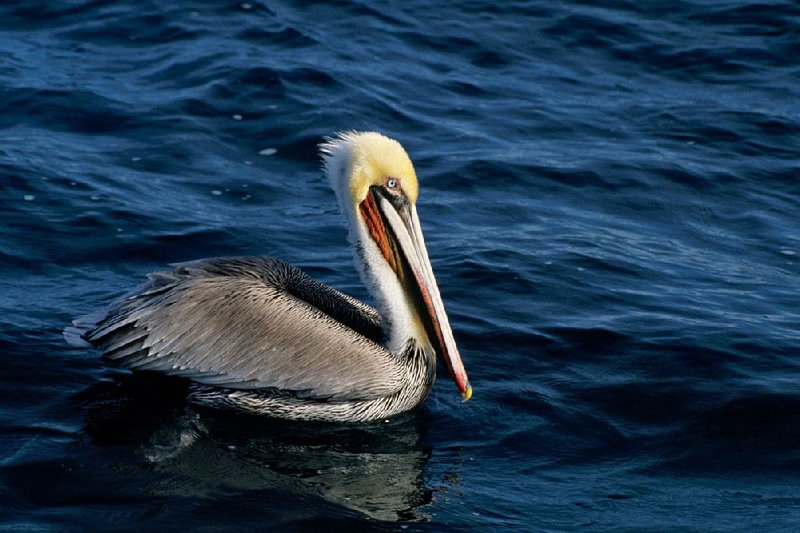You know it's a big deal when the usually circumspect, reserved purveyors of PBS publicity start using all capitals with exclamation marks.
As in: "It's LIVE!!"
That certainly got my attention. Then they referred to the program as "a television event," and "the ultimate reality show." I was hooked.
What we're talking about is what's being labeled "one of PBS' most ambitious projects ever." Big Blue Live is, as its title states, a live (or LIVE!!) three-night nature series designed to celebrate the restoration of the Monterey Bay National Marine Sanctuary in California.
The sanctuary is home to many of the world's most iconic and adorable sea critters and mammals. They include the humpback whale, which is being considered for removal from the endangered species list thanks to the sanctuary designation.
Other creatures to be featured include sea lions, dolphins, elephant seals, sea otters, great white sharks, shearwaters, brown pelicans and blue whales. They all gather at this time of year in Monterey Bay to feed on the abundance of food.
PBS notes that Monterey Bay's unique underwater geography, with a cold water deep ocean canyon close to shore, brings species by the thousands into the now thriving ecosystem. It happens once a year.
The live adventure begins at 7 p.m. Monday on AETN and returns at the same hour Tuesday and Wednesday. As a special bonus, AETN will also air the live West Coast feed at 10 p.m. each evening. The format and premise will be the same, but in all likelihood we'll get different critters.
PBS is joining with the BBC for this "first-of-its-kind multimedia co-production," which involves a facility and open-air studio at the Monterey Bay Aquarium in Monterey, on the southern edge of the bay. There, producers, scientists and technicians "will aim for awe-inspiring live coverage of the confluence of sea animals."
In addition to the aquarium location, the programs will broadcast from aboard sanctuary vessels out in the bay, from submersibles and an airplane, as well as from several shoreline locations and drones.
There will also be some prepackaged material and behind-the-scenes footage. This includes wildlife "personality profiles" and other material shot to give context to what viewers will see live.
The live action, interviews and commentary for each hour-long episode will be handled by co-hosts M. Sanjayan and Liz Bonnin. Viewers may recall that conservationist Sanjayan was the host of PBS' Earth: A New Wild. He is the senior scientist at Conservation International. Bonnin is a British science broadcast journalist best known for her BBC series Bang Goes the Theory and Stargazing Live.
Among those along for color commentary and observations will be animal anatomist and marine mammal expert Joy Reidenberg (host of PBS' Inside Nature's Giants and Sex in the Wild) and shark expert Chris Lowe from California State University, Long Beach.
Given what has been in the news lately, PBS publicity hopes the programs are timely: "[While] the world is transfixed on ramifications of big-game hunting in Africa, Big Blue Live brings awareness to how human protection for the environment and its inhabitants is key to successful conservation efforts in the U.S. and around the world. It's a program to be enjoyed by the entire family."
Here's the breakdown of what to expect each night.
Monday -- Migrating whales, sharks and various birds join species that live full-time in Monterey Bay. Reports originate from Monterey Aquarium and NOAA research vessels. Humpback whale anatomy will be detailed.
Tuesday -- Cameras reach into the hidden world of Monterey's sea lions. Viewers learn about the bay's rejuvenation as demonstrated by the sea otters' return, and Lowe tries to help solve the mystery of shark migration. Featured -- great white sharks and elephant seals.
Wednesday -- In the final episode, the team will search for a blue whale. Reidenberg will discuss the anatomy of the world's largest extant animal as she and Sanjayan try to get up close and personal.
Make the three nights a family adventure. In a news release, BBC spokesman James Honeyborne said, "This is the story of an extraordinary gathering, at a unique place, at one special moment in time. We are going to explore, understand and celebrate this gathering, providing a real-time adventure above, on and beneath the waves. It's a story to celebrate that will inspire viewers of all ages."
If you are mobile and tech-savvy, you can savor the digital experience by logging on to PBS.org/BigBlueLive. Not only can you watch the live streaming simulcast of each broadcast, you can interact with a series of live marine wildlife cameras throughout Monterey Bay.
Style on 08/30/2015
